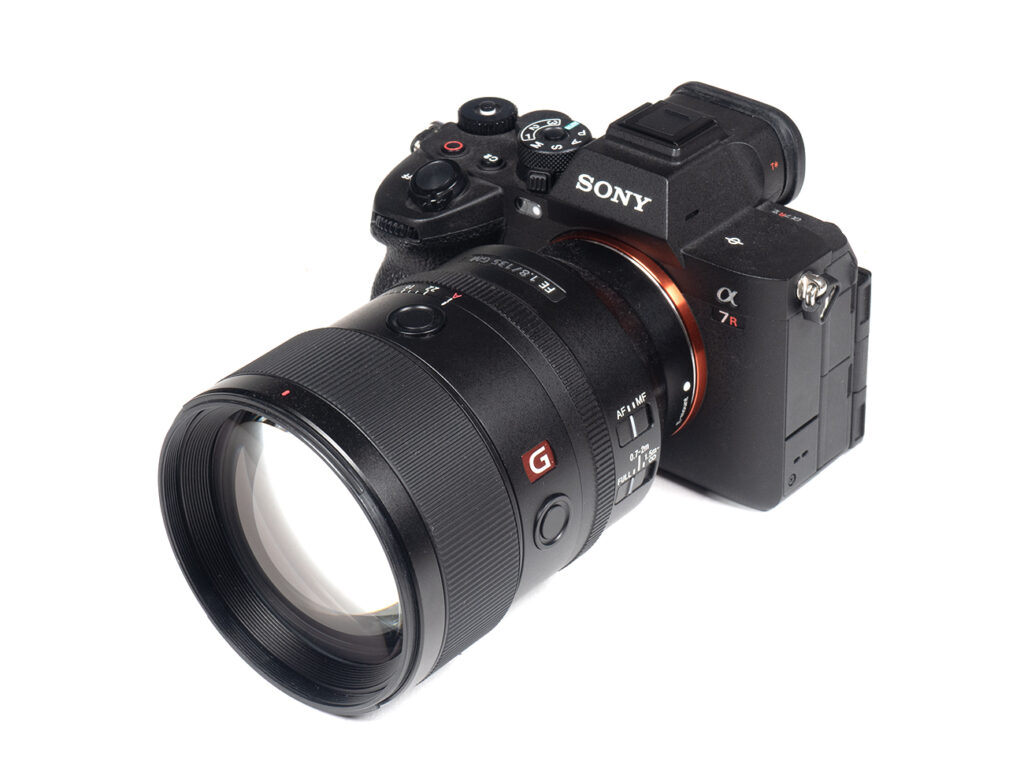Let’s revisit the Forgotten Gems League again. 135mm lenses aren’t overly popular, and that’s despite the fact that these are some of the very best quality prime lenses around. These lenses are comparatively easy to design even with an ultra-large aperture – which is why they are so good. And in the Sony world, the local gorilla is the Sony FE 135mm f/1.8 GM. While such lenses may be easy to design, it doesn’t mean they are affordable, unfortunately. The Sony lens costs about 1600 EUR or 2200 USD. The fact that this lens belongs to Sony’s Grand Master lineup doesn’t help with the pricing, of course.
However, this also means that you get quality stuff here – also mechanically. The FE 135mm f/1.8 GM is made of high-quality plastics on a magnesium alloy frame. Needless to say, the lens is sealed against dust and moisture. The focus ring turns smoothly, as you might expect. It also features a clickable aperture ring, two customizable focus-stop buttons, and a focus range limiter. A floating system helps to maintain high optical quality at close focus distances.
Videographers surely appreciate that the Sony lens is compatible with in-camera focus breathing compensation. A deep barrel-shaped lens hood is part of the package.
The AF system uses a dual front and rear XD linear motor, which provides both snappy and silent AF operations. Manual focusing is “by-wire.” An image stabilizer is not provided here.
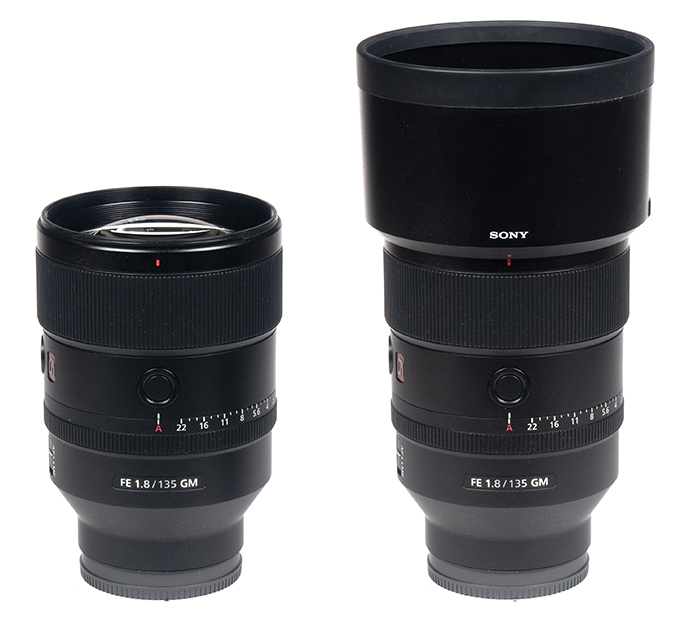
| Specifications | |
|---|---|
| Optical construction | 13 elements in 10 groups (1x XA, 1x Super ED, 1x ED) |
| Number of aperture blades | 11 (rounded) |
| min. focus distance | 0.7m (max magnification 1:4) |
| Dimensions | φ89.5x127mm |
| Weight | 950g |
| Filter size | φ82mm |
| Hood | barrel-shaped (bayonet mount, supplied) |
| Other features | de-clickable aperture ring floating system dust- and moisture-resistant focus limiter fluorine coating |
Distortions
The Sony FE 135mm f/1.8 GM produces a slight amount of pincushion distortion in RAW images, and the remaining traces are removed via auto-correction if activated.
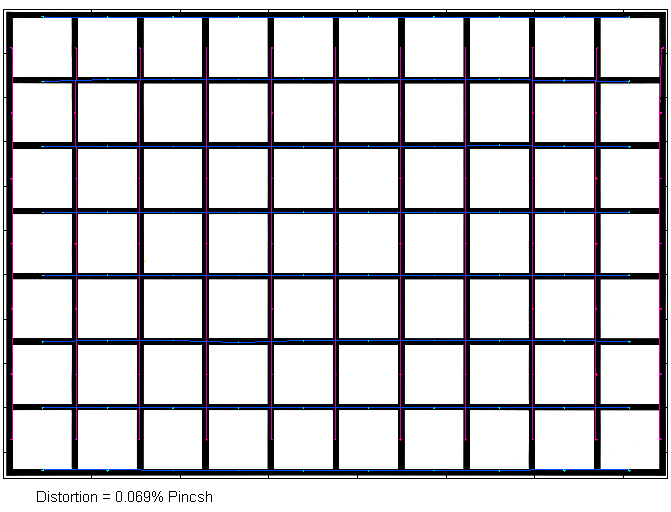
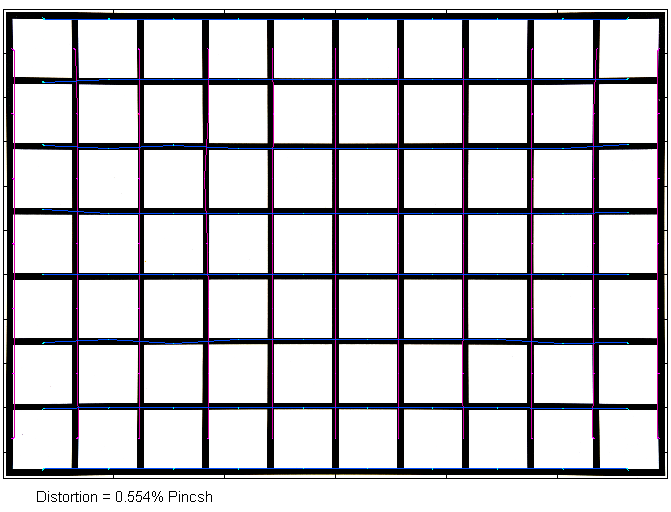
Vignetting
Ultra-large aperture lenses tend to produce very high vignetting at max aperture, but the Sony lens produces only a moderate amount of light falloff at f/1.8 – at least for a full-format lens. A RAW vignetting of 1.5 EV (f-stops) is still visible, and the issue is mostly gone from f/2.8.
With activated auto-correction, the vignetting is reduced by about one f-stop at f/1.8 – that’s usually not disturbing anymore. Interestingly, there’s a curious oddity because Sony decided on a less aggressive correction at f/2.2. And from f/2.8, the light falloff is less than 0.5 EV.

MTF (resolution) at 42 megapixels
The Sony lens delivered downright superb resolution results across the aperture range. The broader center is outstanding straight from f/1.8, and only the corners are “just” very good at this setting. They also reach excellent levels from f/2.8, with the best overall result achieved at f/4. As usual, diffraction is limiting the quality at smaller aperture settings.
The field curvature is negligible. The centering quality of the tested sample was good.
Please note that the MTF results are not directly comparable across the different systems!
Below is a simplified summary of the formal findings. The chart shows line widths per picture height (LW/PH) which can be taken as a measure of sharpness. If you would like to know more about the MTF50 figures, you may check out the corresponding Imatest Explanations.
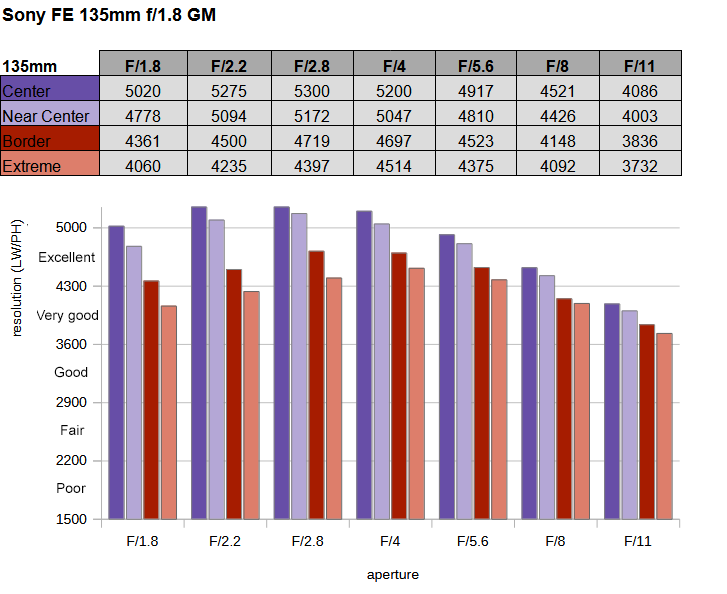
Chromatic Aberrations (CAs)
Lateral CAs have an average width of around 0.5px at the image borders and max aperture. This is almost negligible, even without auto-correction.
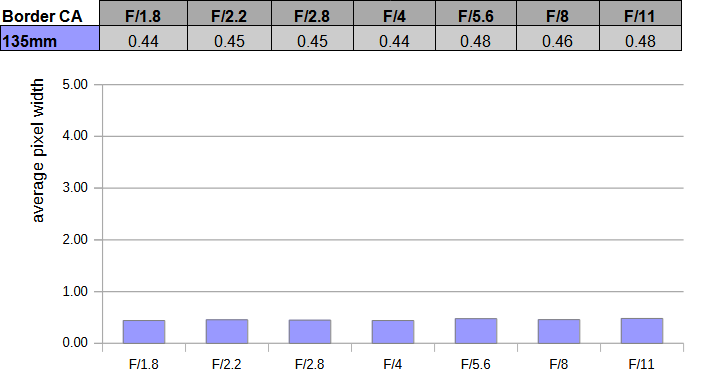
Bokeh
A 135mm f/1.8 lens is primarily about shallow depth-of-field photography, so let’s take a look at the quality of the bokeh.
Out-of-focus highlights are nicely rendered with a very smooth inner zone of the discs and barely any outlining effect. The circular shape of the discs remains intact even at f/4 – thanks to the 11 rounded aperture blades.
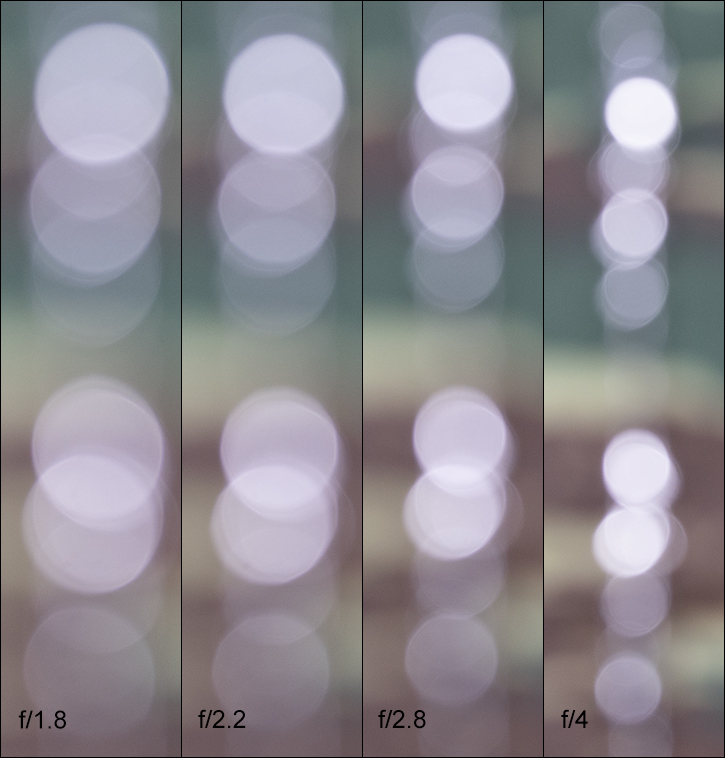
When looking at the highlight rendering across the whole image field, we can spot a “cat-eye” deterioration from the circular shape from roughly the mid-field into the corners. As usual, stopping down will broaden the zone showing circular discs, and the corner discs are restored at f/4.
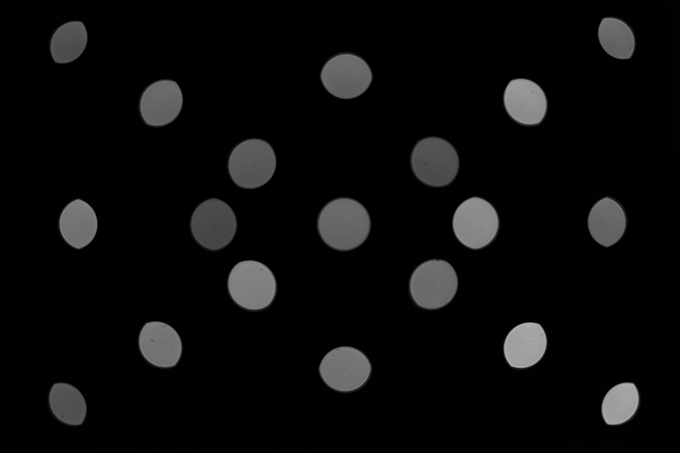

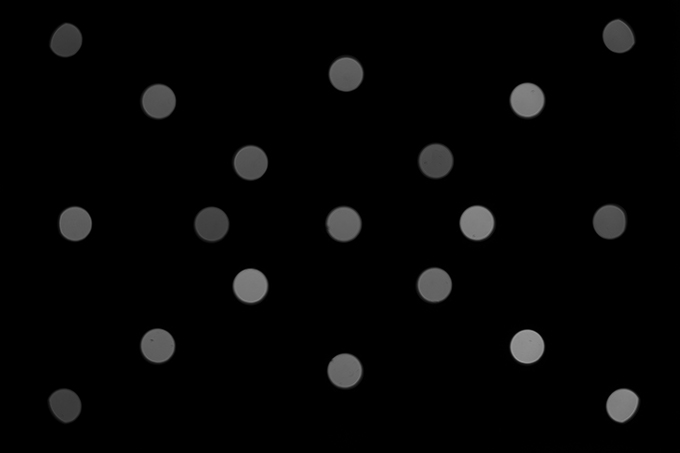
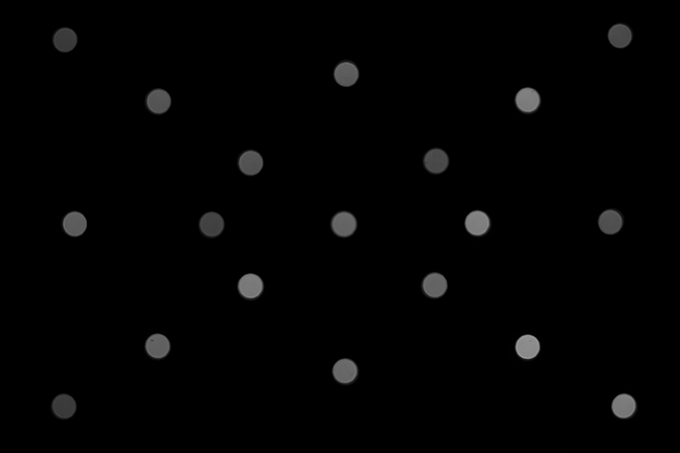
The rendering quality in the focus transition zone is smooth in the image background – shown to the left below. The foreground blur (to the right) is good but not perfect.
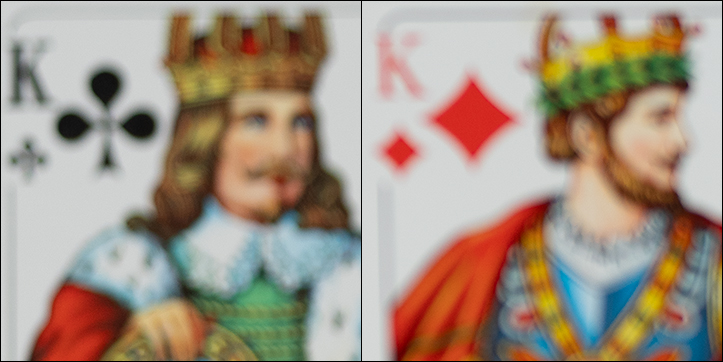
Bokeh Fringing / LoCA
LoCAs, or bokeh fringing, is a color fringing effect on the Z-axis. It shows up with a purplish tint in front of the focus point and a greenish tint behind – and it’s nearly impossible to fully correct in post.
The Sony FE does a decent job here. At f/1.8, you can spot a bit of fringing, although it’s not really disturbing. Traces of LoCAs are still visible at f/2.8, and even at f/4 if you are really nitpicky.
You may also notice that the focus point remains spot-on when stopping down (= no relevant RSAs).
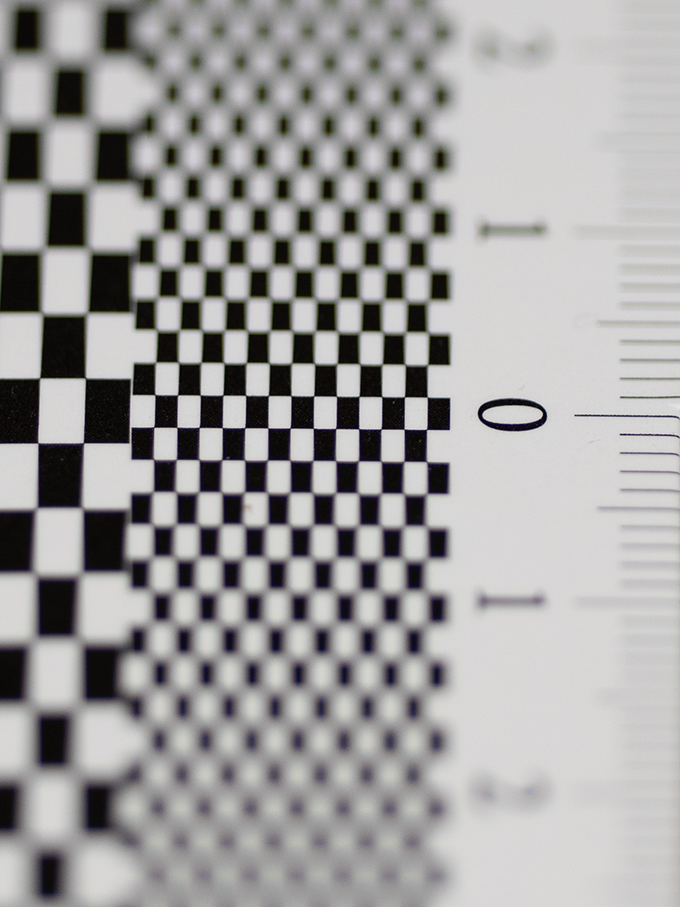
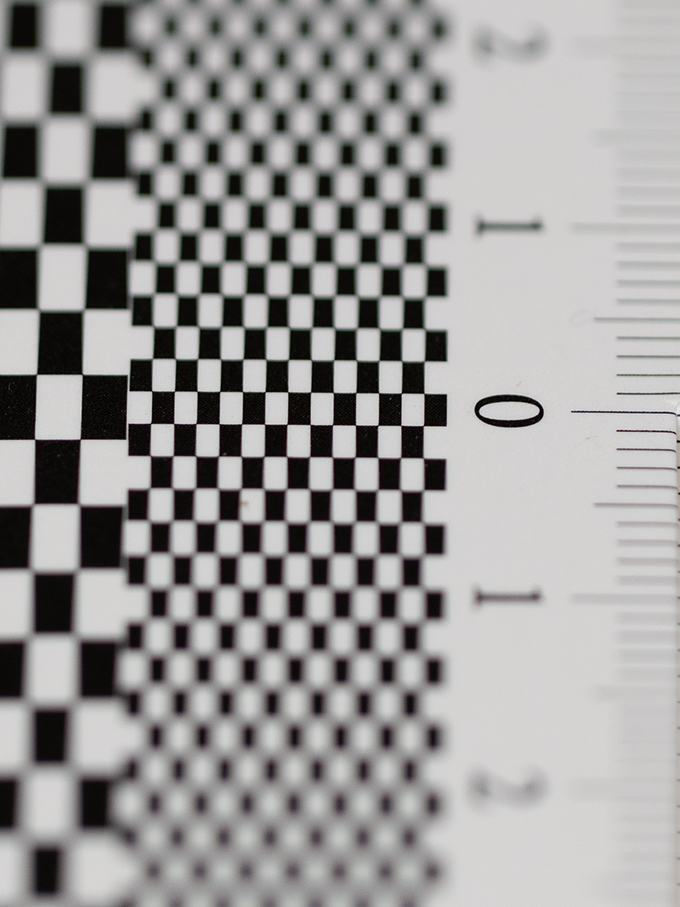

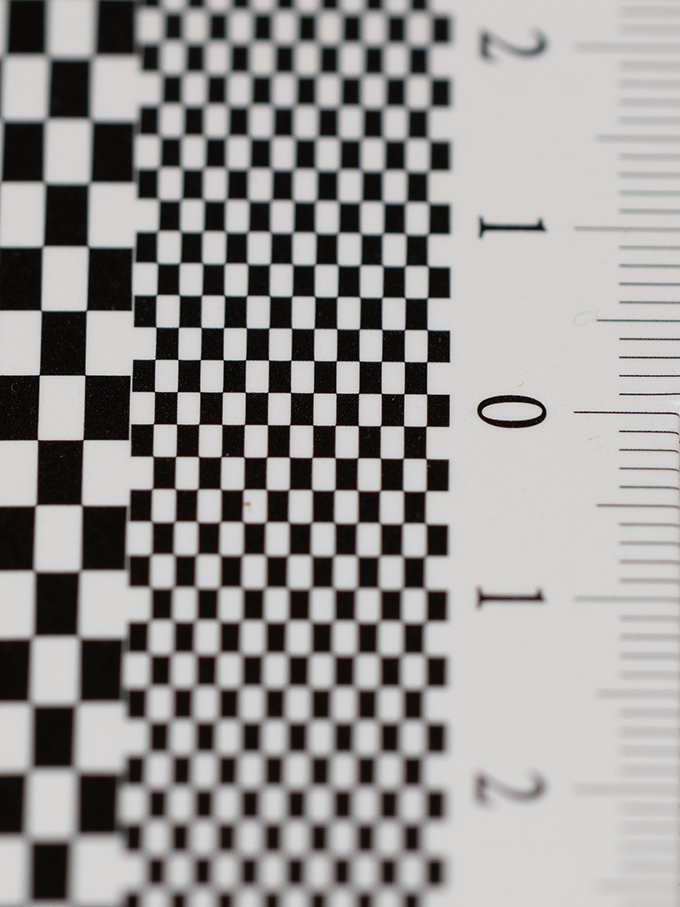
Competition
The Sony FE 135mm f/1.8 GM isn’t alone in this class. There’s the formidable Viltrox AF 135mm f/1.8 FE Lab, which provides a similar performance at about half the cost. The Viltrox lens is much heavier, though, and the AF isn’t as good. On the more affordable side, there’s also the Samyang AF 135mm f/1.8 FE. The Samyang is even more affordable than the Viltrox lens. However, it is somewhat worse optically. On the upside, it is the most lightweight of the bunch by quite a margin.
Sample Images
The Sony FE 135mm f/1.8 FE delivers an almost impeccable performance. It is razor sharp at all relevant settings, and low lateral CAs help with the quality perception. Image distortions are basically irrelevant even without auto-correction. The latter does help a bit with taming the vignetting at large apertures. The quality of bokeh - and that's probably the main reason for purchasing this lens in the first place - is stunning. If we are nitpicky, there is one dark spot, though - axial CAs. They can be visible in certain scenes.
The mechanical quality is superb, but then you expect no less from a GM lens. It feels sturdy, the controls are of high quality, and there's weather sealing. The AF is very snappy as well despite the heavy lens elements and the floating system.
The Sony FE 135mm f/1.8 GM is an awesome, but pricey lens, and it easily deserves our "Highly Recommended" mark.
The Good
- Outstanding sharpness
- Superb build quality
- Fast AF
- Breathing compensation with modern Sony cameras
The Bad
- Expensive
- Axial CAs could be a little better at large aperture settings
-
Optica Quality
-
Build Quality
-
Price / Performance


